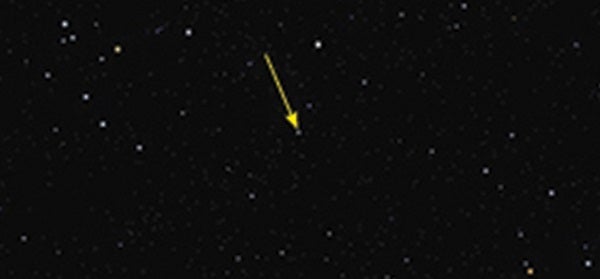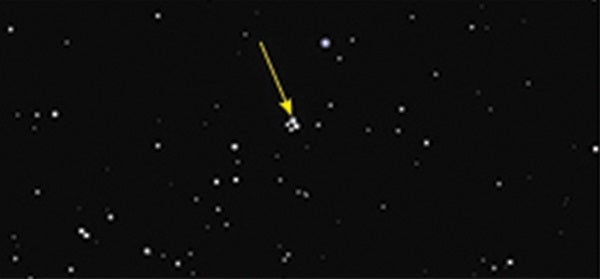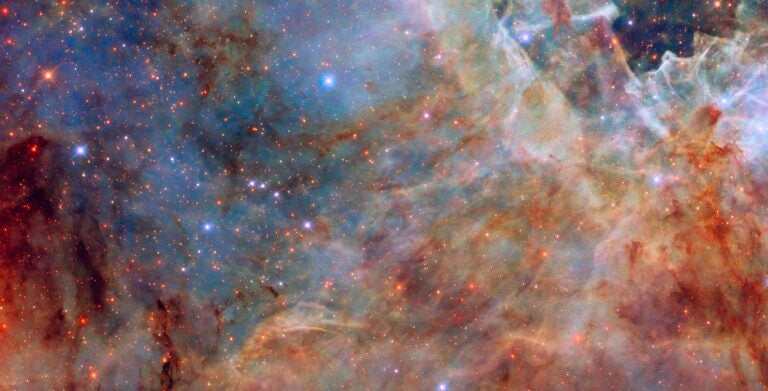The first is a huge naked-eye asterism (a recognized star pattern that’s not a constellation) first suggested by astronomy popularizer (and Curious George author) Hans A. Rey. In his 1952 book The Stars: A New Way to See Them, Rey introduced readers to the “Virgin’s Diamond.” He created this four-sided figure out of the stars Arcturus (Alpha [α] Boötis) as the eastern point, Spica (Alpha Virginis) as the southern point, Denebola (Beta [β] Leonis) to the west, and Cor Caroli (Alpha Canum Venat-icorum) to the north. Like the Summer Triangle, autumn’s Great Square, and the Winter Hexagon, the Virgin’s Diamond (more commonly known as the Virgo Diamond or the Great Diamond) is a convenient guidepost to identify the constellations of spring.
We’ll revisit this stellar quartet next month, looking at their distances and those of other prominent spring stars.
The other Virgo Diamond isn’t as readily seen as Rey’s. It’s faint and surprisingly small, composed of five stars of magnitudes 10.9 to 13.7, and squeezed into an area small enough to be covered by Jupiter when it lies at opposition. To capture it, you’ll need the finder chart on this page and a medium-size telescope (6 inches or larger) coupled with an eyepiece that magnifies at least 150x.
This diamond appears to have been discovered by Noah Brosch of the Tel Aviv Obs-ervatory. Brosch spotted it on a Palomar Observatory Sky Survey plate. He reported it in the December 1991 issue of Monthly Notices of the Royal Astronomical Society, describing it as “a system of five stars, containing objects of 12–13 mag and arranged in the form of a diamond.” He surmised the system was probably an evaporating small cluster. Because Brosch was the first on the scene, some sources refer to the stellar group as Brosch’s Diamond.
One thing that really im-pressed Ivester about Brosch’s Diamond was its symmetry. Each side is 33″ to 37″ long, giving it the square appearance of a baseball diamond. Home plate is the magnitude 10.7 star TYC 4948–53–1. Stars of magnitudes 13.2, 13.2, and 12.3 represent first through third base, respectively. Most challenging is the magnitude 13.7 fifth star, just 7″ from third base at a spot where the third baseman would play. Ivester has so vigorously promoted Brosch’s Diamond that some amateur astronomers call it Ivester’s Diamond.
Last spring, I viewed the Diamond with a 10-inch f/5 reflector. I star-hopped from Zaniah (Eta [η] Virginis) using 60x and came upon something tiny and fuzzy, not unlike the four-star asterism that comprises M73. A boost to 208x revealed the Diamond. Home plate and third base were readily visible; first and second required averted vision. In a rich Milky Way field, the Virgo Diamond would have been lost, but in this star-poor region of Virgo, it stood out dramatically. I couldn’t see the fifth star, but I was observing under turbulent skies with a 5th-magnitude limit.
Questions or comments? Email me at gchaple@hotmail.com. In my next column, we’ll time travel to the stars of spring. Clear skies!












